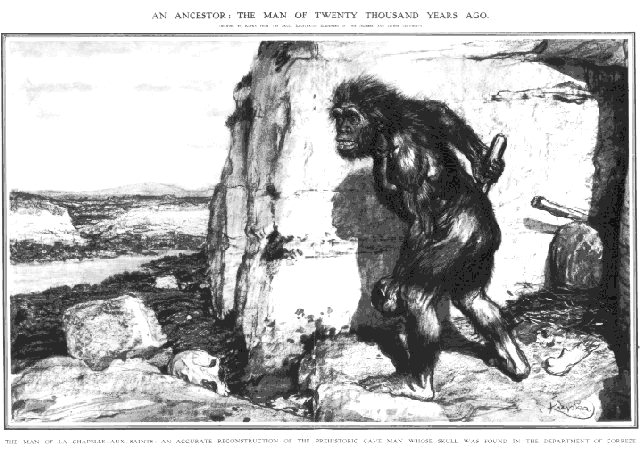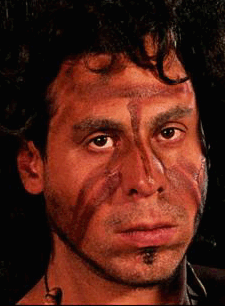Brutish Origins of Humanity?


Nothing of his [Aghoo's] face was visible but a mouth bordered by raw flesh and a pair of murderous eyes. His squat stature exaggerated the length of his arms and the enormous width of his shoulders. His whole being expressed a brutal strength, tireless and without pity.
J. H. Rosny-Aine, La Guerre du Feu (1911)
There was the grisly thing again. It was running across an open space, running almost on all fours, in joltering leaps. It was hunchbacked and very big and low, a grey hairy wolf-like monster. At times its long arms nearly touched the ground.
H. G. Wells, "The Grisly Folk" (1921)
Raymond Dart, Australian anatomist (1893-1988)
Robert Ardrey (1908-1980), The Hunting Hypothesis (1976)
William Golding, The Inheritors(1955)

George Constable, The Neanderthals (1973)
-each region --> local lines of human evolution
-each line--> evolved at different rates
-deep-seated racial characteristics divided world's people
-The Origin of Races(1962)
- 'If Africa was the cradle of mankind, it was only an indifferent kindergarten. Europe and Asia were our principal schools.'
-Homo erectus evolved separately 5X --> Homo sapiens
Modern man first appeared in precisely the region of the world where culture- according to Europeans -later reached its zenith. Prehistory foreshadowed history. The only issue to sort out was whether the Cro-Magnons had entered the continent from somewhere else, or whether the Neanderthals had evolved into them.
In these last few years, new fossils, new techniques, and new approaches have completely obliterated this once-comfortable hypothesis. The most damaging blows have come from Africa and the Middle East, where it now appears that fully modern human anatomy . . . had already emerged as early as 100,000 years ago. According to the "Out of Africa" hypothesis, these earliest modern humans eventually spread out to take over the territory of all other existing hominids . . . .
The Neandertha Enigma (1995)